This is one in a series of posts on the Fujifilm GFX 100. You should be able to find all the posts about that camera in the Category List on the right sidebar, below the Articles widget. There’s a drop-down menu there that you can use to get to all the posts in this series; just look for “GFX 100”.
Note: This post has been revised to reflect the fact that, as indicated by the metadata, the GFX 100 has a {Green, Blue] [Red, Green] (aka GBRG), Bayer color filter array (CFA) pattern, not the usual [Red, Green] [Green, Blue] (aka (RGGB) one that I had assumed.
The GFX 50S and GFX 50R did not have any phase-detect autofocus (PDAF), managing only with contrast detect autofocus (CDAF). That produced very accurate, but sometime ponderous, focusing. The GFX 100 has on-sensor PDAF (OSPDAF, if you like running all those letters together). We’ve seen that OSPDAF in the Sony alpha cameras can produce a striping effect under some lighting conditions. The Nikon Z-series cameras have some firmware to prevent that problem, but the cure is worse than the disease — there are dark bands at the PDAF rows in the shadow areas of some images. Does the presence of PDAF in the GFX 100 cause problems in images? It’s too early to tell, and we’ll need more than dark frames to find out, but today I did some spectral analyses of some dark frames to see if the OSPDAF leaves any footprints there.
I started at ISO 100, and looked at all four raw planes I’m calling the second green plane the G2 plane):
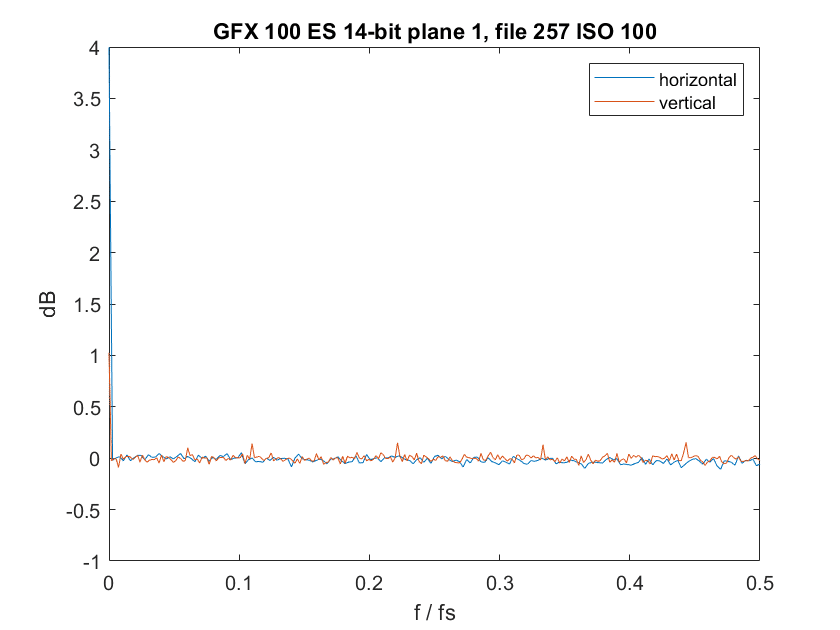
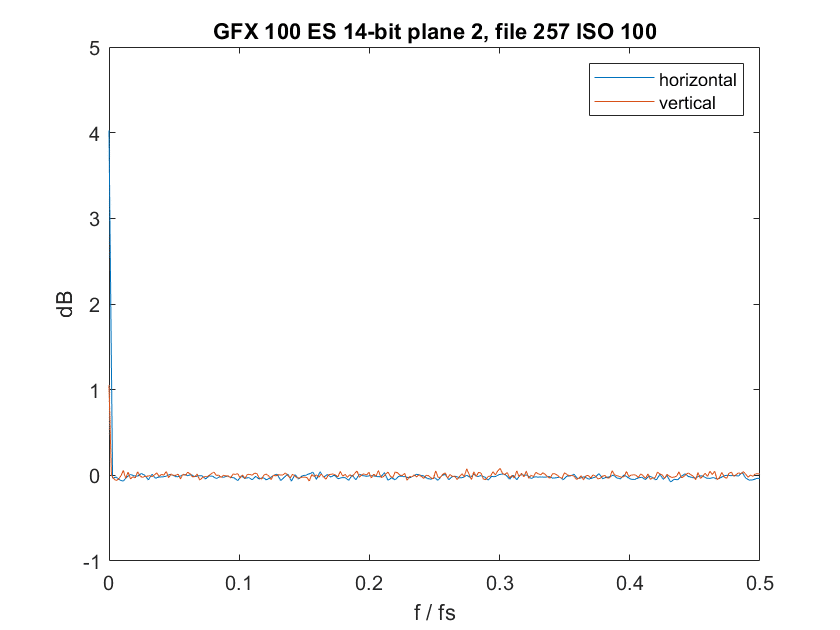
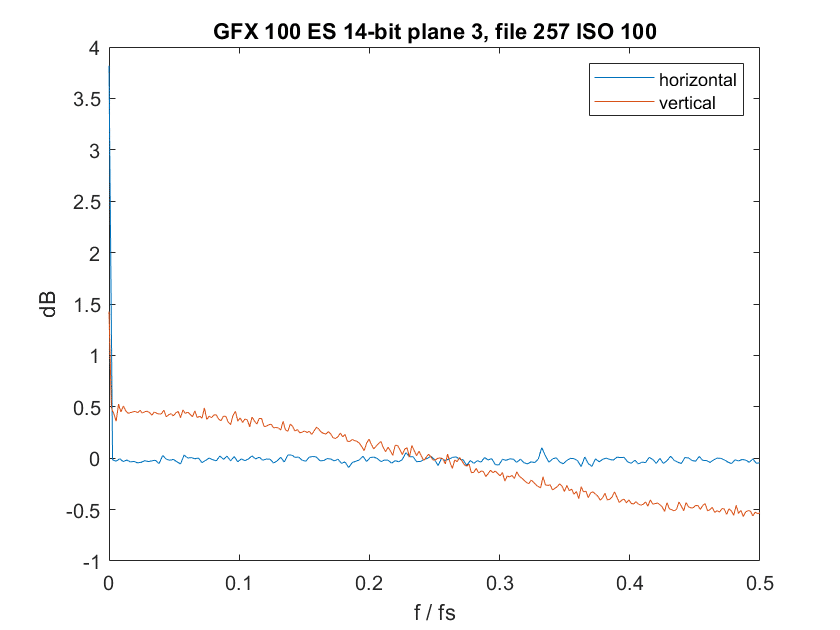
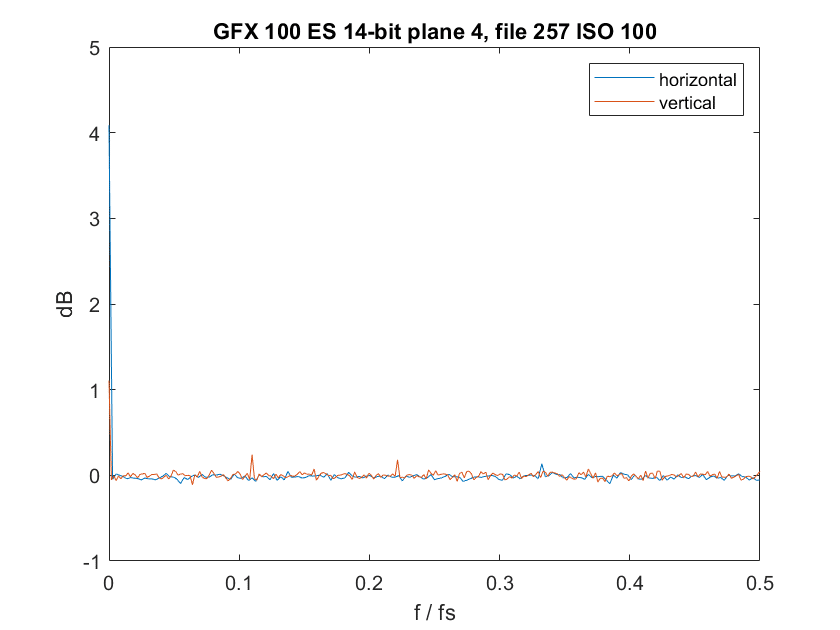
The red plane shows the unmistakable effects of digital lowpass filtering. It is probably the plane with the PDAF pixels. Since those pixels don’t contribute to the image, they missing information must be filled in by interpolation from the active pixels, which provides a mild cut in the high spatial frequency response.
There are small periodic spikes in the green planes. They don’t amount to much here, but at higher ISOs they get worse. Periodic effects like this tend to be more objectionable than purely random noise.
If we increase the ISO level, we can see the spikes in the red plane.
If we keep increasing the ISO, the green and red plane spikes get worse. The other two are not affected.
The horizontal direction appears pretty clean, but note the spike at one-third the sampling frequency (fs) that gets worse as the ISO rises. The combination of the vertical and horizontal periodic components may be what is giving rise to the crosshatched noise that Lloyd Chambers is seeing. In the past, I’ve found that digital lowpass filtering like that we see here doesn’t cause visual problems unless you are doing scientific astro work. However, the spikes are enough to give me pause. I’ll be looking into this.
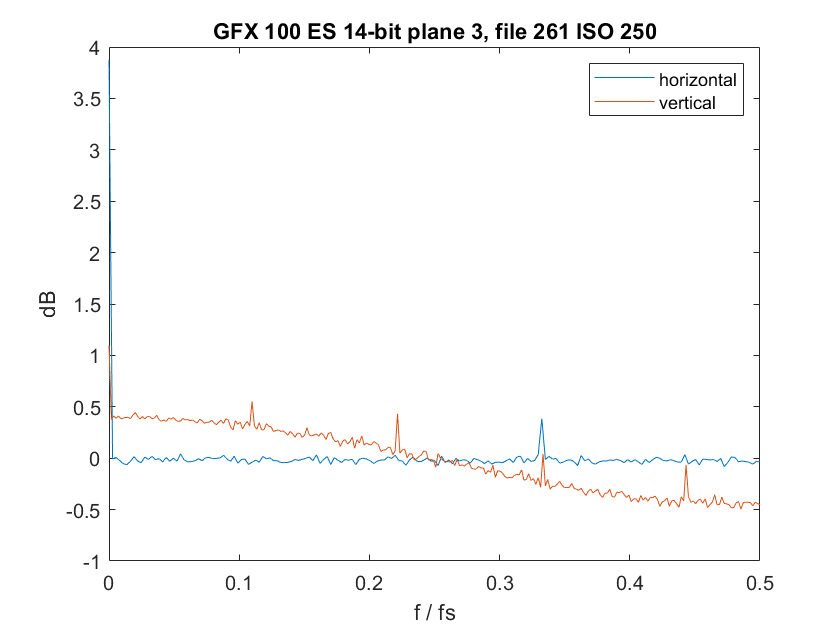
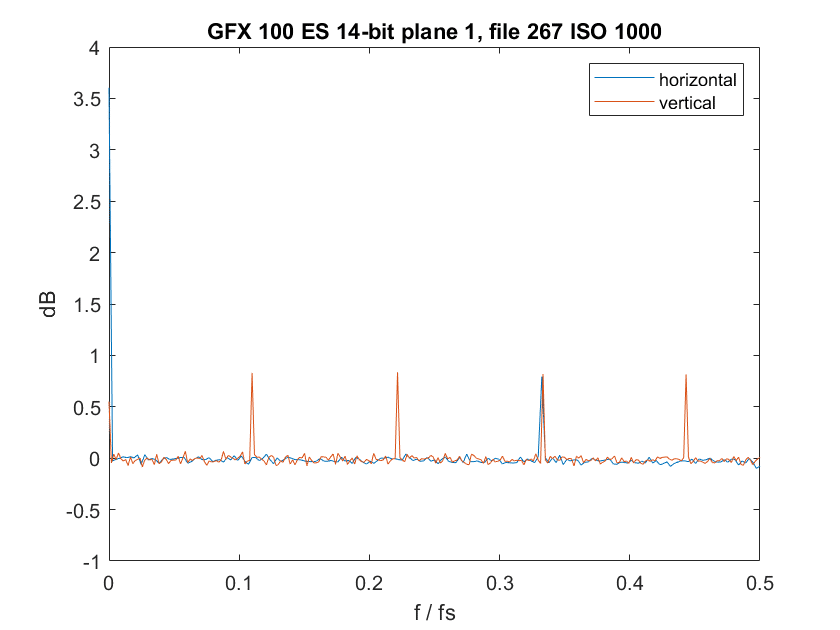
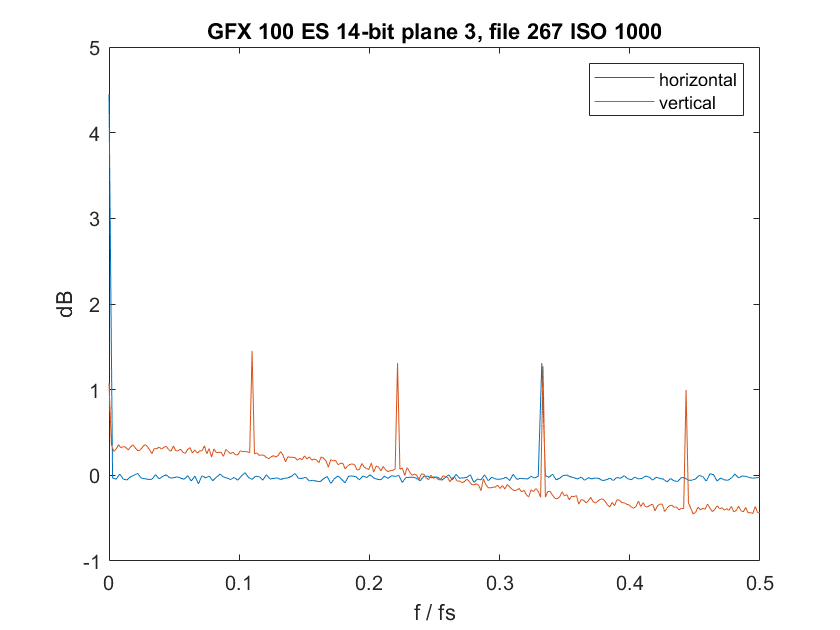
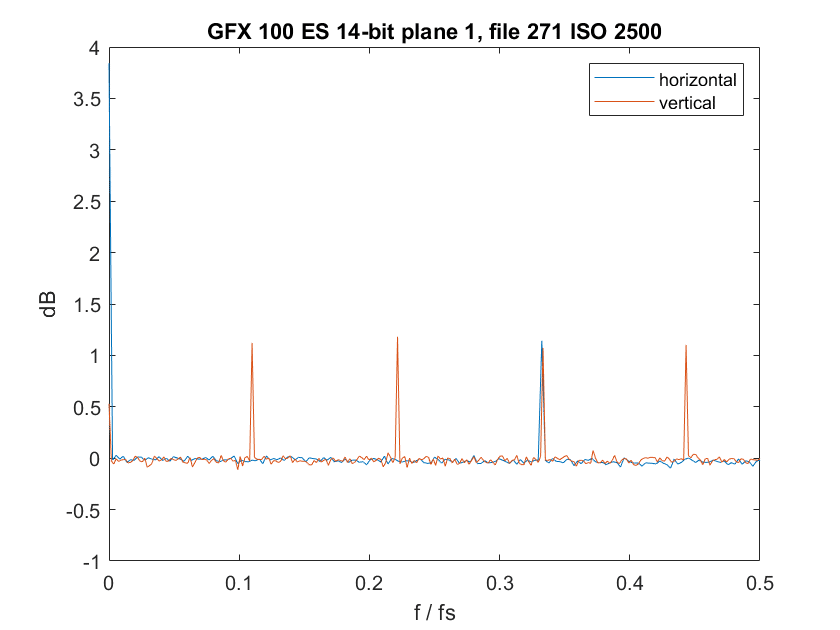
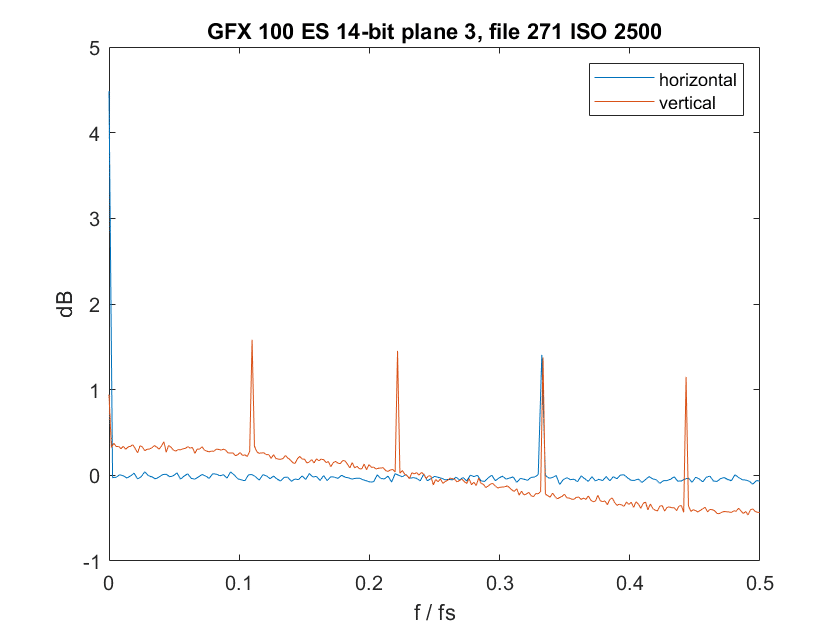
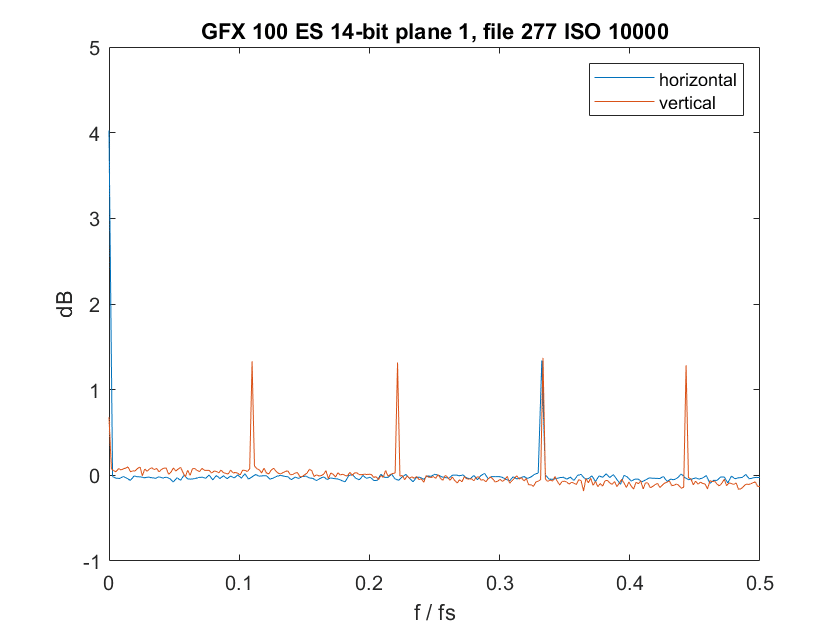
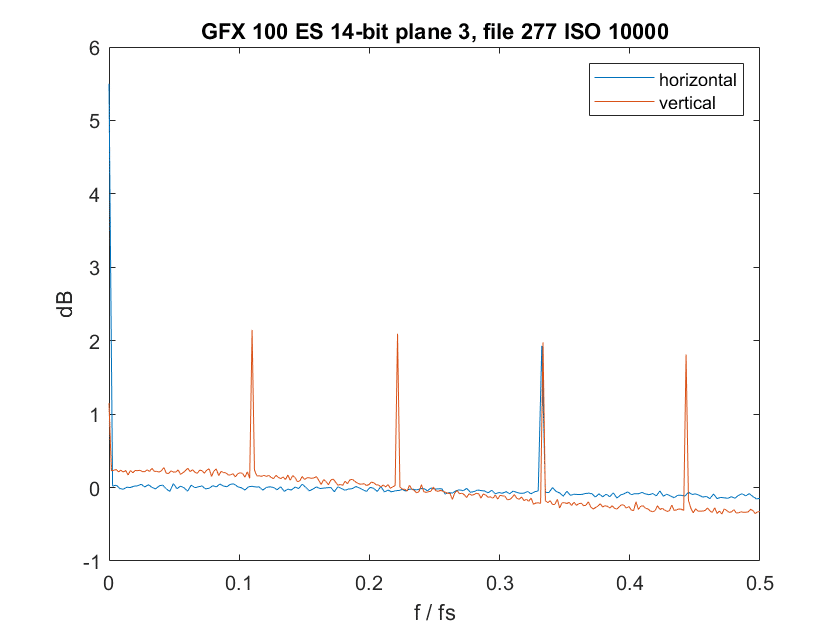
Very intersting, digital low pass filtering, is that producing the enoying ‘star eater’ problem which several Sony camears are prone of?
This is part of the firmware and there is no work around?
I thought the GFX 50s does not have this problem.
p.s. how does the dynamic range of the GFX 100 compares with the 50S?
It’s not as bad, because this happens only every 18th row.
I know of no workaround. But it remains to be seen how this affects real images.
The GFX 50S has no PDAF, and thus doesn’t have this issue.
Here’s a link to the EDR of the GFX 50S:
https://blog.kasson.com/the-last-word/fujifilm-gfx-read-noise-and-edr/
But note that, for same-sized prints, the GFX 100 will appear to have less read noise because the image will require less enlargement.
Going back to that GFX 50 EDR data reminded me that the GFX 50 had a similar kink around ISO 200. Totally forgot about that.
Dave